Words by Sena Law
Visuals by Brithi Sehra
For Mc Joyin Rey Palagan, going to fashion school was a fantasy. The same kind of fantasy as the fashion shows he would put on as a child living in a rural southern island in the Philippines.
There, fashion was not seen as anything beyond a means of survival and necessity. The clothing back home was never seen beyond its initial purpose.
But Palagan protested this idea. He found his fashion playground within nature. The product? Bracelets made from twigs and pebbles collected in the forests and skirts made from gathered coconut leaves.
“It was the reality of a rural gay kid’s fantasy,” Palagan says.
Palagan immigrated to Canada when he was 13 years old. Five years later, he found a new playground—the fashion program at Toronto Metropolitan University (TMU). The once-fantasy became Palagan’s new reality in 2015, when he first enrolled in fashion design at the university. But realities often came with its checks. Palagan realized what had initially enticed him to fashion—the glitz and glamour—were only a fraction of what it meant to be a student of fashion. Alongside the other 80 students in his class, this four-year journey would be a true testament of true and hard work.
“It was a pivot point for me,” he says. “I realized if I really want to become a fashion designer, then I should be able to really embrace the reality of it. The back end, the hustle and bustle, the no-sleeping, the forever being curious and forever learning.”
As a queer child in an immigrant family, Palagan recalls his first few years in the fashion program being a time of dissonance as familial tensions peaked.
“I grew up in a heavily Christian family and my grandfather is a pastor. So me going into a fashion program was definitely a pivotal point for not just me but for my family,” Palagan says. “And I wouldn’t say that it was smooth sailing.”
During Palagan’s time at TMU, he witnessed many shifts within himself and the program. Between curriculum changes and his own self-discoveries as a designer, one constant that remained was the support he received at the university.
An invitation was extended by one of Palagan’s professors for a one-on-one check-in.
“This sounds so weird but they could see that I wasn’t really on my A-game,” Palagan says. “Wholeheartedly, they were very, very understanding.”
From there, Palagan blossomed. He eagerly opened himself to any opportunity, participating in every fashion competition offered at school. The work was never easy—it meant hours of tedious labour and countless sleepless nights, but Palagan always gave it his all and beyond.
“I was just enjoying everything.”
Palagan graduated in 2019 and was awarded Designer of the Year, travelling to London to represent Canada for Graduate Fashion Week. Today, Palagan has established himself as a designer and a force to be reckoned with in the Toronto fashion scene, having curated four collections since his graduation under his brand, Joyin Rey.
Still, he never fails to recognize the very integral contributor to his success — an encouraging environment.
“There is that potential in every single person. And it’s really up to the people around you to really support it.”
While the creative landscape at TMU is ever-evolving, some TMU students and faculty credit TMU as a driving force in self expression within university’s fashion scene.
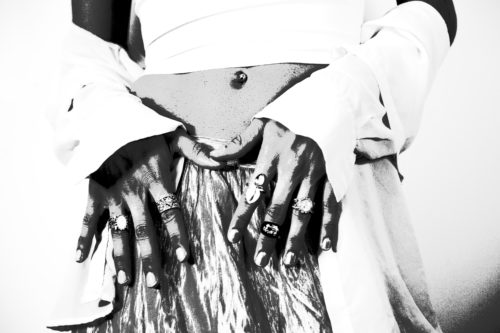
At the heart of the TMU fashion community are students taking on the role of creators and curators, bridging together a supportive network that embraces diversity and non-conventions. TMU fashion is garnering never-before-seen momentum and exposure.
On the closing day of the 2023 Fall/Winter season at Fashion Art Toronto, collections from 13 bachelor of design undergraduate students, three master of arts fashion candidates and two TMU alumni were showcased on the runway. The collaboration between the two institutions was led by Toronto designer and TMU lecturer Mic Carter, aiming to emphasize the work of racialized queer and trans students.
In a 2023 interview with Glossi Mag, Carter said he’s “deeply inspired by the designers and thinkers that are coming out of [TMU].”
Carter has been a longtime advocate for gender non-conformists in the fashion community, creating genderless clothing for non-binary people and allies through his brand L’Uomo Strano.
Palagan was one of the two TMU alumni showcasing at the collaborated runway. The opportunity came about in a chance encounter between him and Carter at a queer ballroom event.
“They were one of my professors back in fourth year. And they opened up this opportunity because I told them I really want to do a new collection,” Palagan says. “I was so lucky that it just happened at the right time and at the right place…I never say no to opportunity.”
Palagan’s collection was named Dichotomy. Exploring themes of gender identity and sexuality, the five looks from Joyin Rey’s collection were representative of Palagan’s own internal dialogues and dilemmas. Beyond all else, it was telling a story crafted by him.
“I don’t design just because I have to design. It’s always personal to me. My brand is always about storytelling. So I always say if there’s no story to tell, then there’s no collection to showcase,” says Palagan.
TMU being unofficially crowned the “most fashionable university” in Toronto by some students is not without its reasons. As it was for Palagan, the fashion landscape at TMU is a playing ground for many to explore their complex identities and ways of self-expression.
Looking up and down Gould Street and around Kerr Hall will reveal evidence of the unwavering acceptance for all—embodied by the eccentric outfits and an attitude that could care less about societal judgment.
Palagan says the presence of a fashion student can be sensed by “the clacking, even under heavy winter.” He says he would be sewing in “five inch heels boots” regardless of the weather. “I didn’t care and I mean, it’s innate for a fashion student.”
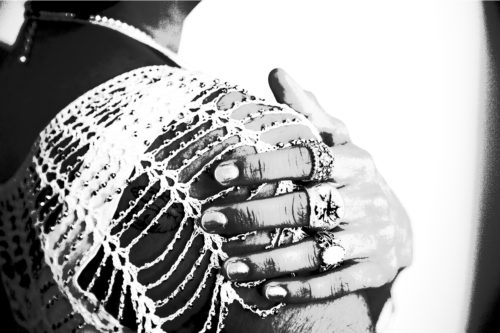
For 18-year-old Prada Faraji, being in the fashion sphere is, at times, an isolating experience.
Before reaching adulthood, Faraji had already immersed themself in the fashion industry, establishing their brand, House of Etoile, during secondary school.
The same brand debuted at Fashion Art Toronto in 2021 and in following years.
As an already established designer, the decision for Faraji to enroll in fashion school was one rooted in their desire for community.
“I always really wanted that university experience. And it was just like a nice idea to be around like-minded people who also liked fashion,” Faraji says. “A lot of people that I grew up with weren’t really interested in fashion. So it was nice to be in a group of people that were my age and also into the same interests as me.”
A quick Google search will point to TMU School of Fashion being the top-ranked fashion program nationwide. Some students and faculty say its status can be attributed to the program’s meticulous curriculum, its industry connections and to many, its defiance to traditions.
For professor May Friedman, that sentiment is shared.
“TMU is a really interesting place to learn, teach and grow. As a university that is newer and less stuck in ivy-clad traditions, I think there’s room to explore potentially radical pathways toward scholarship and pedagogy that allow us to meet a range of ways of being in the world,” Friedman says.
Friedman has been a professor at TMU since 2011, first working in the School of Social Work. A decade later, she joined the school’s fashion program.
As an educator with an emphasis on inclusion and diversifying the status quo, Friedman expresses optimism at seeing other faculty members across the institution doing the same exciting work.
“I see an increase in both the people and the practices across the institution, a valuing of creative knowledge and an openness to doing things in a different way,” she says. “I see that shift as a reason for hope and a motivation to keep doing the work to make things even better.”
Faraji was part of Friedman’s Fashion and Race course in their first semester at TMU. The content of the class revolved around aspects of oppression in dress and in the fashion industry. Inclusion of these mandatory courses as part of the fashion program is exemplary of TMU’s on-going efforts to change the narrative.
“The industry was brought upon as a very classist and oppressive field and it honestly continues to be. But I feel like the next generation of designers, with how the programs are, it will definitely change,” Faraji says.
As an extrovert, some of Faraji’s fondest moments as a first-year fashion student so far have been the mundane conversations and banter they have with fellow classmates.
“I love meeting new people.”
In an industry that relies on inter-connectivity, knitting yourself into the complex spider web of like-minded creatives proves to be integral for success.
For Faraji, being in a university environment has shone a new light on the importance of community and network.
“I feel like the school really focuses on the communicative and social aspect of fashion which is something I don’t really take into consideration often,” Faraji says.
“In a way, university kind of keeps me sane and makes me realize that I’m not the only 18-year-old fashion child.”
As House of Etoile’s Instagram bio proudly states, “different is not wrong.” The TMU fashion landscape is fundamentally built on individuality and self-expression.
The openness for students to outwardly express themselves through their outfits and choice of garments can be accredited to the sense of safety within the community.
“When you are surrounded by a group of people that also don’t necessarily care about social norms, you begin to not really care either. I feel like TMU is the right [space] for that,” Faraji says.
“We love your outfit! Can I take a photo of you?”
For many fashion students and lovers at TMU, there has been an added sense of anticipation walking down Gould Street since the latter half of 2022. If luck dawns on you and the stars align, you might be approached by Arjun Kalra or his friends on your way to class.

“It’s for TMU Archives.”
If those words ring like music to your ears, you are most likely familiar with the sensation that is @tmuarchives on Instagram. Since their first post back in November 2022, TMU Archives has been capturing the essence of the school’s fashion forward spirit by logging outfits found around campus on their account.
Kalra is a second-year student in the performance acting program. Having wavered between the acting and fashion programs, Kalra ultimately chose the former but his love for fashion has always persisted.
His involvement with TMU Archives began the same as most. “I really had an interest in it in first year. And I wanted to be featured on that page with all the other cool people.”
After befriending the creators of TMU Archives, whose identities mostly remain undisclosed, Kalra began helping out in the operation—scouting out the best outfits on campus.
“We all have an interest in fashion, and it’s just something that we can discuss. And when we find someone who looks really cool or is wearing something striking, we all get excited about it.”
Dressing up for school might be an idea that is alien to some. But for many students in the fashion community at TMU, it’s a source to inspire and to be inspired by.
“Everyone has a right to get dressed in a way that feels good and authentic. Seeing fashion as something restricted is not the way forward and I’m excited to see our students be on the cutting edge of changing fashion into a site of activism rather than a source of oppression,” Friedman says.
Kalra’s own fashion journey is interlinked with his exploration of sexuality and queerness. He believes the school’s fashion community being built on the basis of acceptance warrants a safe playground for all.
“I think the biggest risks in fashion are being taken here, as well as the most openness to be able to express that creativity that people have. I think that the bravery and creativity to me was genuinely inspiring.”
TMU Archives has acted as a force field for the fashion landscape on campus. It transpired a new motivation—the possibility of having your efforts documented and acknowledged—then shared with a like-minded network of fashion participants.
“People have been excited to show out in their best fit, because they want to put themselves out there and be captured and highlighted, which I think is so beautiful,” Kalra says. “I really hope that continues as time goes forward, having a platform where students can not only find inspiration for fashion but also see the types of fashion they resonate with.”
During Palagan’s most recent work at Canada Goose, he was astounded to find that more than half of the design team were graduates from TMU—a finding that he says encapsulates the “caliber of the network and the connection” found at the school.
As Palagan moves away from the fashion corporate world, he is actively expanding his own brand. Palagan lives by a busy and occupied schedule as he prepares Joyin Rey to go into commerce.
In the process, he gains a new source of motivation from his encounters with fellow TMU fashion graduates.
“There is a new generation of young designers who are not looking for a design job but finding their own brand. Not just to create designs but to have their own voice, create their own empire, build their own world,” Palagan says.
“How brave are these kids?”
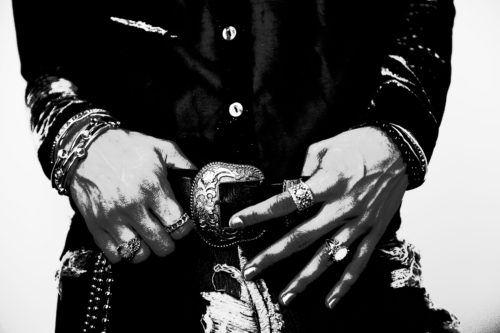

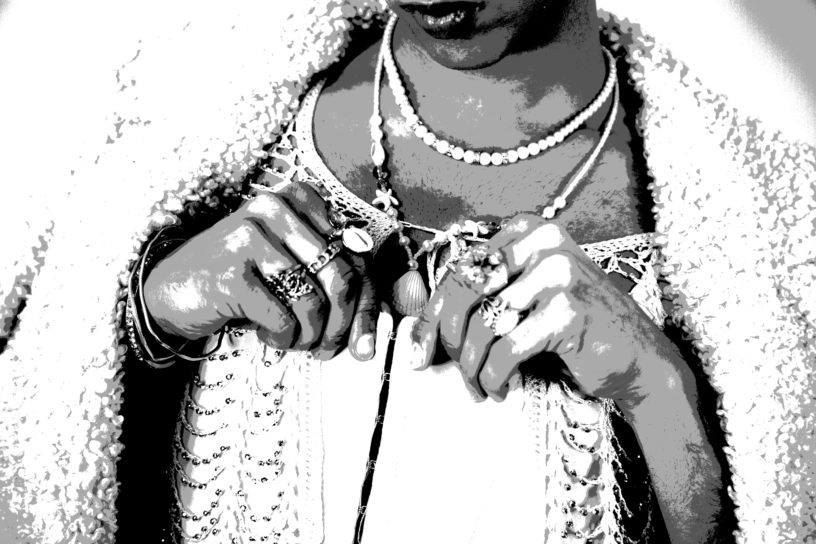






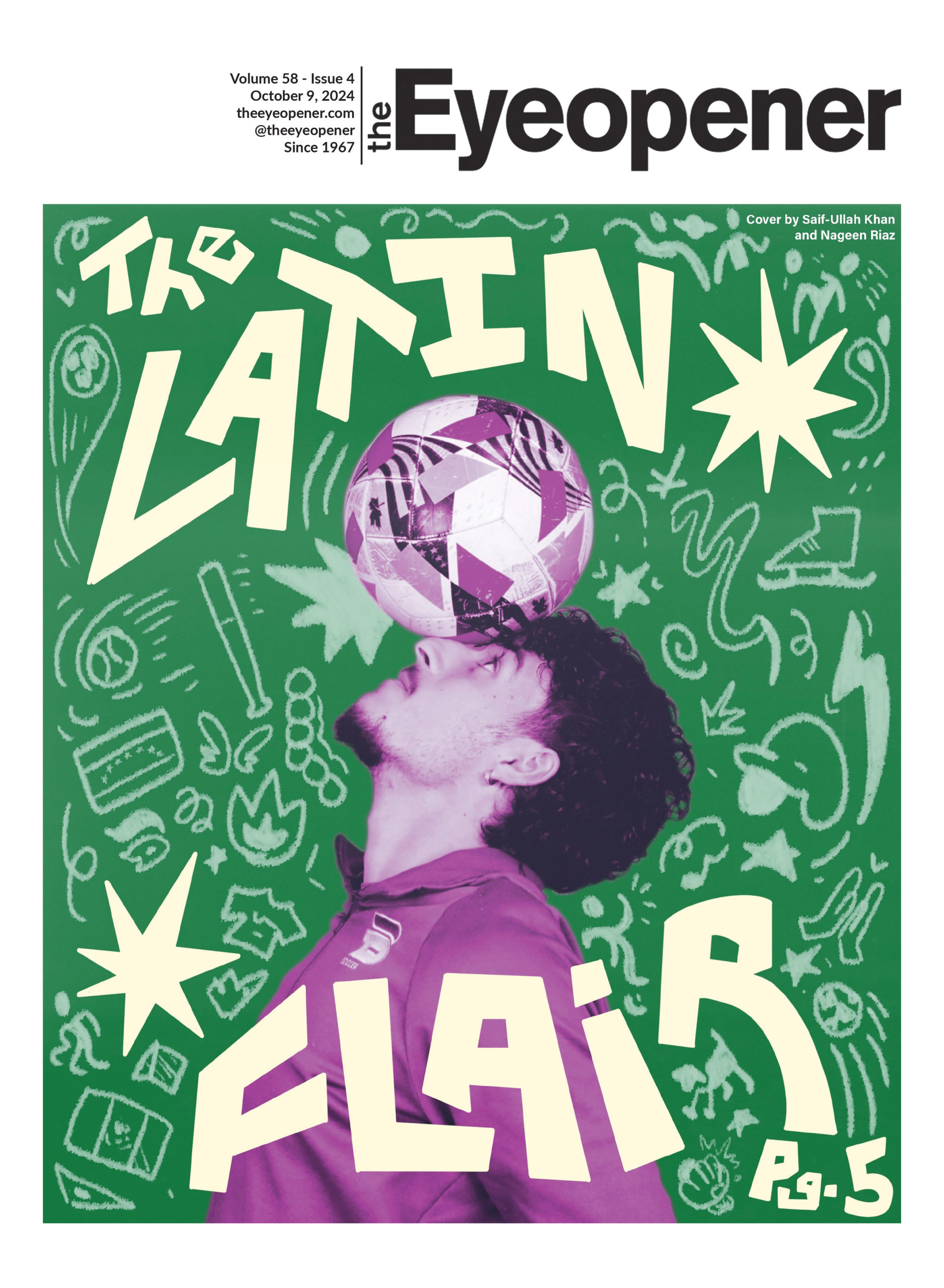

Leave a Reply